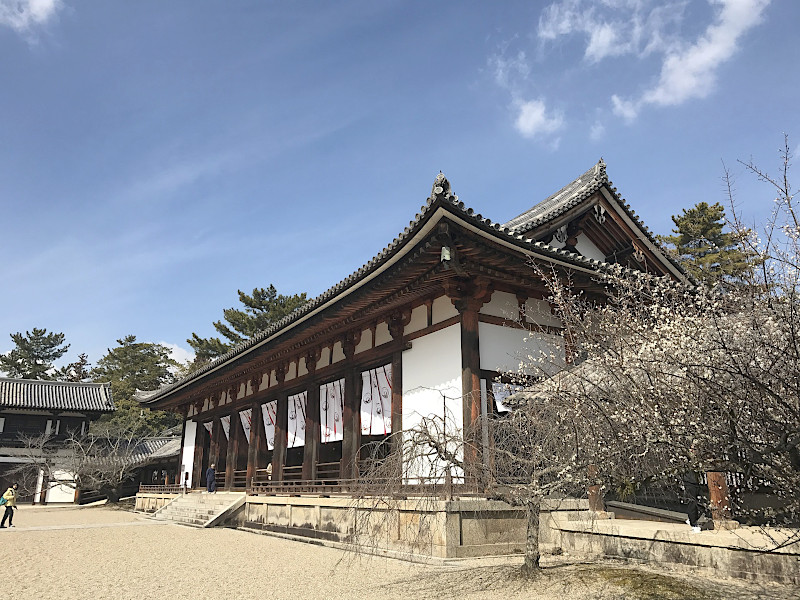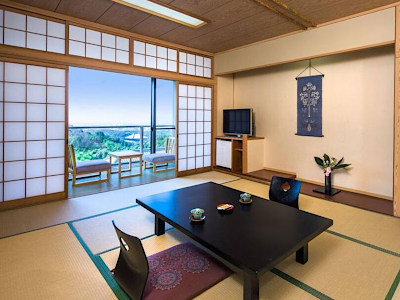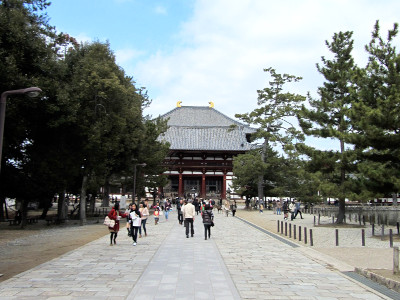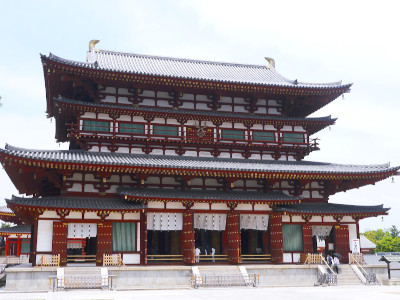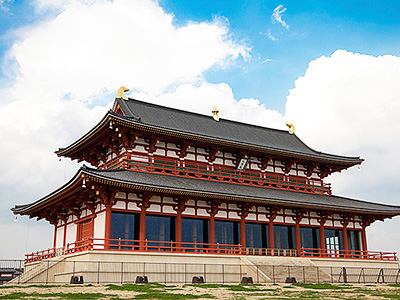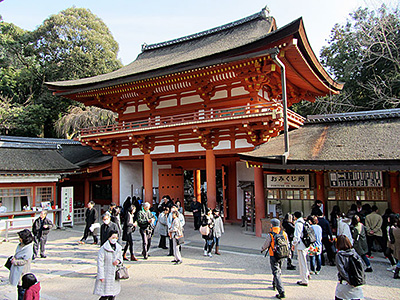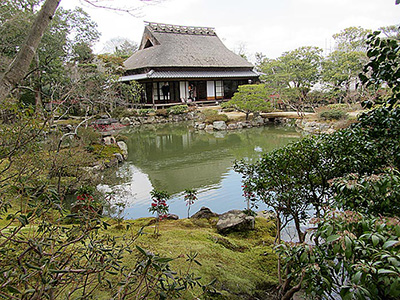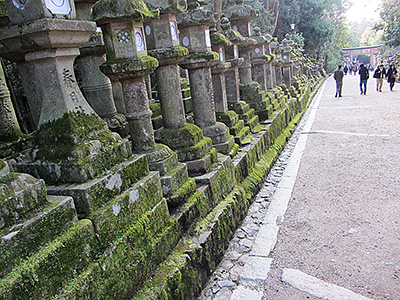Horyuji Temple near Nara
This post can contain affiliate links, which means that we may receive a small commission if you make a purchase using these links.
Facts & Figures
The Horyuji Temple complex near Nara is truly special and old. In 1993 the Buddhist temple was named a UNESCO World Heritage Site and it is one of the oldest temples in Japan. The complex consists of 48 buildings, which have the status of National Treasures and Important Cultural Properties, and covers an area of 146000 square meters.
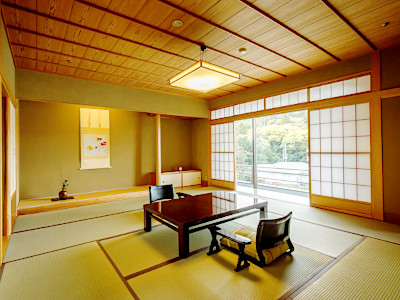 Best Places to Stay in Nara >
The famous Five-Story Pagoda (Goju-no-To) and 10 other buildings are the oldest wooden structures in the world. This Buddhist monastery is the only example left from the Asuka Period (538 - 710), which shows the architectural influences of Korea, China, and Japan. It is truly remarkable that a wooden structure can survive for so long. Horyuji temple grounds consist of two parts the Western Precinct (Saiin Garan) and Eastern Precinct (Toin Garan). The Western part, enclosed by roofed corridors, has its focus on the Five-Story Pagoda, the Main Hall (Kondo), and the Central Gate (Chumon). The Eastern part has the Hall of Vision/Dreams (Yumedono) at its center. Horyuji Temple is without doubt one of Japan’s most prominent ancient temples with a history of over 1400 years. My tip: Do not miss the Chuguji Temple (right behind Horyuji), which is well-known for a seated statue of Buddha.
Best Places to Stay in Nara >
The famous Five-Story Pagoda (Goju-no-To) and 10 other buildings are the oldest wooden structures in the world. This Buddhist monastery is the only example left from the Asuka Period (538 - 710), which shows the architectural influences of Korea, China, and Japan. It is truly remarkable that a wooden structure can survive for so long. Horyuji temple grounds consist of two parts the Western Precinct (Saiin Garan) and Eastern Precinct (Toin Garan). The Western part, enclosed by roofed corridors, has its focus on the Five-Story Pagoda, the Main Hall (Kondo), and the Central Gate (Chumon). The Eastern part has the Hall of Vision/Dreams (Yumedono) at its center. Horyuji Temple is without doubt one of Japan’s most prominent ancient temples with a history of over 1400 years. My tip: Do not miss the Chuguji Temple (right behind Horyuji), which is well-known for a seated statue of Buddha.
- Horyuji Temple:
- Opening Hours - 8:00 am to 5:00 pm (22nd of Feb. - 3rd of Nov.)
- Opening Hours - 8:30 am to 4:30 pm (4th of Nov. - 21st of Feb.)
- Closed - open the whole year
- Admission fee - 1500 yen (Adults - 12 years and older), 750 yen (Children)
My tips for local activities
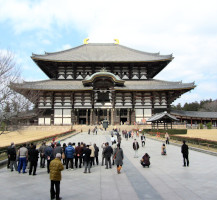
How about exploring the highlights and hidden gems of the fascinating city Nara with a local guide? The personalized tour by our partner GetYourGuide can take between 2 - 6 hours. For more details check out this page >
History
Horyuji Temple was built by Prince Shotoku (574 – 622) in 607. He followed the wish of his sick father Emperor Yomei (540 – 587). Yomei needed a place where the family could pray for his recovery. Unfortunately, he died before the construction was finished, but Prince Shotoku and Empress Suiko (554 – 628) made his wish come true. The temple enshrined an image of an Buddha called Yakushi Nyorai (Buddha of healing and medicine). As a side note, Prince Shotoku had a remarkable legacy in introducing Buddhism to Japan. Therefore you can find here more than 2300 important cultural and historical articles and structures. A fire in 670 destroyed most of the Horyuji buildings, but over the years (until the early 8th century) everything was rebuilt to its former glory. In 1949 during some repair work on the Main Hall (Kondo), a fire broke out and destroyed a very old mural dating back to the Asuka Period (538 - 710). The public outcry led in the end to the establishment of a fire prevention day for cultural properties. Horyuji was Japan’s first temple to be designated a UNESCO World Heritage Site in 1993 under the label Buddhist Monuments in the Horyu-ji Area.
Location

Horyuji Temple is located near Nara in Ikaruga within the Nara Prefecture.
Address: 1-1 Horyuji Sannai, Ikaruga, Ikoma District, Nara 636-0115
How to get to Horyuji Temple?
- 12min from JR Nara Station to Horyuji Station served by Yamatoji Line and
- 15min walk from Horyuji Station to Horyuji Temple
Sightseeing spots at Horyuji
Top:
Main Hall (Kondo) - The two-story structure belongs to the oldest wooden buildings in the world. It houses Horyuji’s most important treasures, like bronze Buddha statues of Amida Nyorai (Buddha of the Pure Land), Yakushi Nyorai (Medicine Buddha), Shaka Nyorai (Shakyamuni, the historical Buddha), and murals. Other highlights are the wooden Statues of the Four Heavenly Kings (Shitenno).
Central Gate (Chumon) - The gate with its two guardians (Nio) at the left and right side can be found in Saiin Garan (Western Precinct). It marks the entrance of the inner temple complex, where the Main Hall (Kondo) and Five-storied Pagoda (Goju-no-To) are located. The two guardian statues of Kongo Rikishi are the oldest of their kind in Japan.
Five-Story Pagoda (Goju-no-To) - It is the oldest wooden building/pagoda in the world. The central pillar of Goju-no-To dates back to 594. That means the Japanese cypress was harvested during the Asuka Period (538 - 710). The pagoda has a height of 32.5 meters and inside you will find 97 clay statues from the year 711, which present the 4 famous scenes about the life of Buddha.
Great Lecture Hall (Daikodo) - The single-storied hall was a popular place for the priests to study the teachings of Buddha. Daikodo can be found near the Bell Tower (Shoro) and north of the Main Hall (Kondo). The building was constructed in 990. The original Lecture Hall was destroyed by a fire in 925. Inside you will find the 2.5 meters tall seated statue of the Buddha of medicine and healing (Yakushi Nyorai) with its two bodhisattvas called Gakko (moonlight) and Nikko (sunlight).
Gallery of Temple Treasures (Daihozoin) - The two buildings are relatively new and date back to 1998. It is located east of the Main Hall (Kondo) and on display are many important Buddhist artifacts like statues of Kudara Kannon, Yumechigai Kannon, Tamamushi no Zushi altar, Prince Shotoku portraits, and much more.
Hall of Vision (Yumedono) - The unique octagon-shaped building is dedicated to Prince Shotoku (574 – 622). Yumedono dates back to 739 and priest Gyoshin Sozu gave the order for the project. It was built on the site of Prince Shotoku's private palace. Inside the hall, you will find an absolute highlight - a 1.79-meter-tall statue of Prince Shotoku with the name Kuse Kannon. The wooden statue is covered with gold foil and a legend says it has the power to stop people from suffering. The statue gets unveiled to the public only twice a year for a month in spring and fall. Before 1884 no one had a chance to see this masterpiece.
Sutra Repository (Kyozo) - The building was in the past needed to store the Buddhist sutras. These days it houses the seated statue of Kanroku Sojo, a priest from the seventh century who introduced the concept of astronomy, the lunar calendar, and divination techniques to the country.
Bell Tower (Shoro) - Shoro is located near the Great Lecture Hall (Daikodo). It was destroyed by a fire in 925 and rebuilt afterward. The huge bell is still used by priests for important ceremonies.
Festival & Events in Nara (dates can change without notice)
March
Omizutori Festival (1st - 14th)
This Japanese Buddhist festival dates back 1000 years. Priests at the Todaiji Temple perform rituals (called Shuni-e) for 14 days. They pray for world peace and, a rich harvest, and confess their sins. A very special event during these 14 days is Otaimatsu. Priests ran with huge pine torches through the corridors of the Nigatsu-do Hall. It is said that if you get hit by these fire sparks no evil thing will harm you. Don't miss out on the Omizutori ceremony on the 13th of March. Water is being collected by priests in front of the Todaiji Temple. It is believed this water has the power to cure diseases.
August
Toka-ye Lantern Festival (5th - 14th)
Thousands of candles are lit everywhere in Nara between 7:00 pm and 9:45 pm. Enjoy this special atmosphere in Nara Park, temples and gardens.

